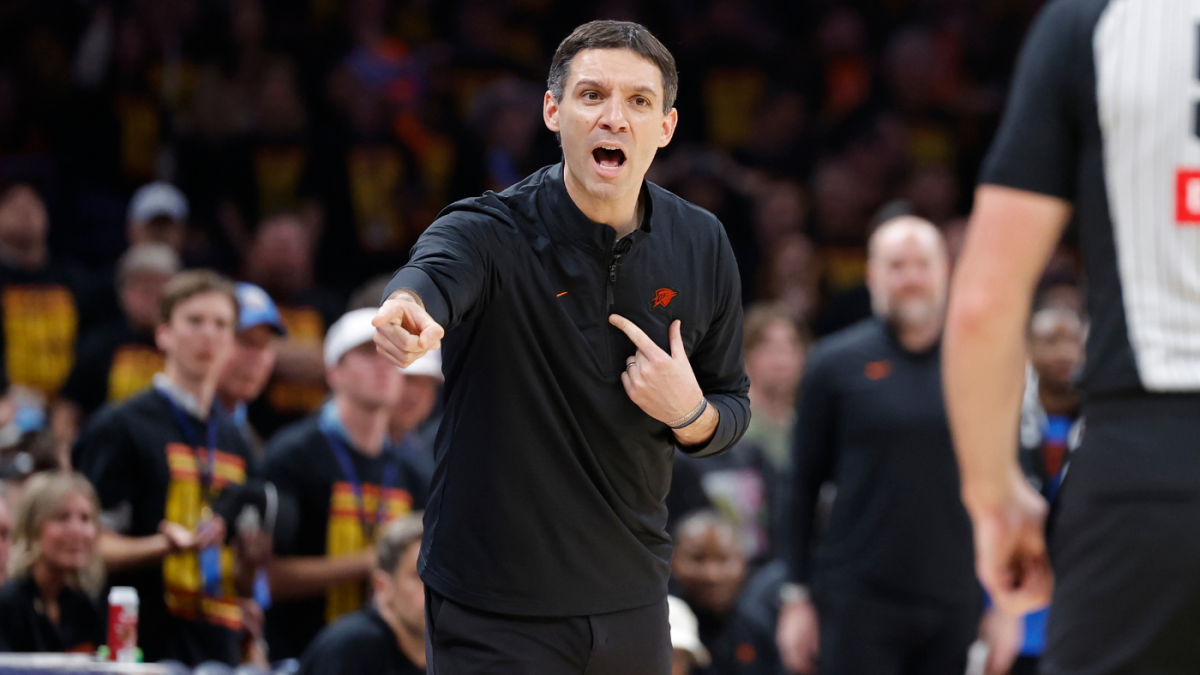The Daigneault Dilemma: A Deep Dive into the Thunder’s Controversial Game 1 Strategy
The Stage is Set
In the pulsating arena of the Western Conference Semifinals, the Oklahoma City Thunder found themselves in a nail-biting situation during Game 1 against the Denver Nuggets. With a slender three-point lead and a mere 11 seconds left on the clock, head coach Mark Daigneault was faced with a decision that would echo through the basketball community. The choice he made—to foul intentionally—sparked a debate that highlighted the complexities and controversies of high-stakes coaching decisions.
The Strategy: Intentional Fouls
Daigneault’s tactic was not a novel one. Coaches across all levels of basketball often resort to intentional fouling in the final seconds of a close game. The primary goal is to disrupt the opposing team’s rhythm and force them into a one-and-one situation, where they must sink two free throws to tie the game or three to win it. However, this strategy is a double-edged sword, carrying significant risks. If the fouled player makes both shots and the team retains possession, the strategy can backfire spectacularly.
The Execution
With the Thunder clinging to a 119-116 lead, Daigneault decided to foul Denver’s Aaron Gordon. Gordon, renowned for his athleticism and finishing prowess, was a high-risk choice for this strategy. The foul sent Gordon to the free-throw line, where he converted one of two shots, narrowing the Thunder’s lead to 119-117. The Nuggets retained possession, setting the stage for a dramatic conclusion.
The Backfire
The strategy unraveled in spectacular fashion. After Gordon’s free throws, the Nuggets quickly inbounded the ball. Nikola Jokic, one of the league’s most gifted passers, found Aaron Gordon wide open beyond the three-point line. Gordon’s shot found the net, tying the game at 119-119 with just 0.8 seconds remaining. The Nuggets then capitalized on a Thunder turnover, securing a 121-119 victory in an astonishing comeback.
Daigneault’s Defense
Despite the criticism, Mark Daigneault stood firm in his decision. He contended that the intentional foul was not the sole reason for the Thunder’s loss. Instead, he pointed to other factors, such as the team’s struggles to secure the ball and execute down the stretch. Daigneault’s stance reflects a broader coaching philosophy: sometimes, the risk is worth the potential reward, and the outcome is not solely determined by the final play.
The Broader Impact
Daigneault’s strategy, while contentious, has ignited a larger conversation about coaching decisions in high-pressure situations. It has also shed light on the intricacies of NBA rules and the inventive ways coaches exploit them. For instance, Daigneault’s use of a “permanent sub” tactic to disrupt Nikola Jokic’s rhythm showcased his innovative approach to the game.
The Permanent Sub Tactic
One of the most captivating aspects of Daigneault’s coaching style is his use of unconventional tactics, such as the “permanent sub” strategy. This involved positioning rookie Dillon Jones in a unique spot on the court to disrupt Jokic’s momentum and force referees to frequently halt the game. While this tactic drew mixed reactions, it underscored Daigneault’s willingness to think outside the box and challenge the status quo.
The Future of Daigneault’s Strategies
As the NBA continues to evolve, so too will the strategies employed by its coaches. Daigneault’s bold decisions, whether they succeed or fail, will undoubtedly influence future coaching strategies. His willingness to take risks and innovate sets a precedent for younger coaches looking to make their mark on the league. The NBA is a dynamic arena, and coaches who can adapt and innovate will always have an edge.
The Daigneault Doctrine
Mark Daigneault’s decision to foul late in Game 1 against the Nuggets was a high-stakes gamble that ultimately did not pay off. However, it underscored his coaching philosophy: to take calculated risks and exploit every possible advantage. Whether praised or criticized, Daigneault’s strategies reflect a deeper understanding of the game and a commitment to innovation. As the Thunder continue their journey, Daigneault’s bold decisions will undoubtedly shape their future and inspire a new generation of coaches. The Daigneault Doctrine is one of calculated risks, innovative thinking, and a relentless pursuit of victory. In the ever-changing landscape of the NBA, coaches who dare to innovate and take risks will always stand out, shaping the future of the game and inspiring those who follow.












